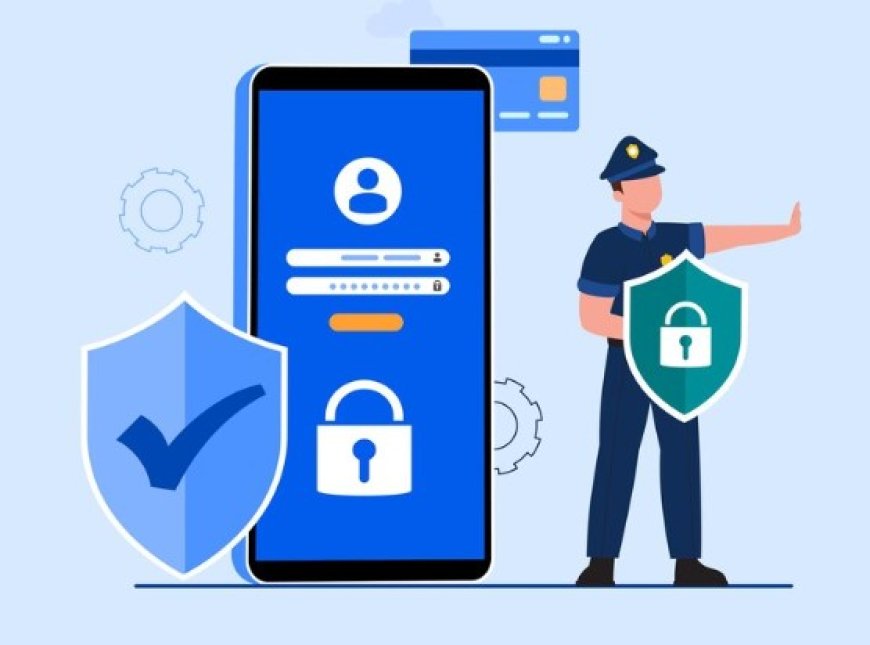Mobile Device Security
Learn about mobile device security measures, tips, and best practices to keep your data safe

Mobile device security refers to the practices and measures implemented to protect mobile devices, such as smartphones and tablets, from various threats and vulnerabilities. It involves safeguarding the data stored on these devices, ensuring their confidentiality, integrity, and availability, and mitigating the risks associated with mobile usage in both personal and professional contexts. Mobile device security aims to protect users' sensitive information, prevent unauthorized access, and maintain the overall security of the device and its connected networks.
Importance of Mobile Device Security
-
Mobile devices have become an integral part of our daily lives, containing a vast amount of personal and sensitive information.
-
Mobile devices are highly vulnerable to security threats due to their portability, connectivity, and extensive usage.
-
Mobile devices are frequently targeted by cybercriminals seeking to exploit vulnerabilities and gain unauthorized access to personal and corporate data.
-
Mobile device security is crucial to protect sensitive information, such as financial data, login credentials, personal photos, and confidential business data.
-
Mobile device security ensures the integrity and privacy of communications, preventing unauthorized interception and eavesdropping.
-
Mobile device security helps in preventing identity theft, financial fraud, data breaches, and other cybercrimes.
-
Mobile device security is essential for maintaining the reputation and trust of individuals, businesses, and organizations in an increasingly connected world.
-
Mobile device security is also important for regulatory compliance, as organizations need to protect sensitive data as per industry-specific regulations and standards.
Common Mobile Device Security Threats
Mobile devices face various security threats that can compromise sensitive information and user privacy. Some common mobile device security threats include:
-
Mobile devices are susceptible to malware infections and malicious apps that can steal personal data, track user activities, or gain unauthorized access to sensitive information.
-
Connecting to unsecured Wi-Fi networks exposes mobile devices to potential eavesdropping, data interception, and man-in-the-middle attacks, leading to unauthorized access to user data.
-
Mobile devices are prone to physical theft or accidental loss, which can result in unauthorized access to sensitive data if the device is not adequately protected.
-
Mobile devices can be compromised, allowing unauthorized individuals to access sensitive data stored on the device or transmitted over insecure channels, leading to data leakage and privacy breaches.
Best Practices for Mobile Device Security
-
Use strong passcodes or biometric authentication (such as fingerprints or facial recognition) to secure the device.
-
Keep the operating system and apps up to date with the latest security patches.
-
Install reputable antivirus and security software on the device.
-
Be cautious when downloading apps and only use trusted sources such as official app stores.
-
Enable encryption for sensitive data stored on the device.
-
Avoid connecting to unsecured Wi-Fi networks and use a virtual private network (VPN) for secure internet access.
-
Enable remote tracking and wiping capabilities to locate and erase data if the device is lost or stolen.
-
Regularly back up important data to a secure location.
-
Educate users about safe browsing habits, avoiding suspicious links or attachments, and being cautious with sharing personal information.
-
Implement mobile device management (MDM) solutions for centralized security controls and policy enforcement.
Mobile Device Security for Enterprises
To ensure mobile device security in an enterprise environment, organizations can implement the following practices:
Mobile device management (MDM) solutions:
Utilize MDM solutions to centrally manage and control mobile devices within the organization. This includes enforcing security policies, managing device configurations, and remotely monitoring and securing devices.
Implementing a mobile security policy:
Establish a comprehensive mobile security policy that outlines acceptable use, security requirements, and guidelines for employees using mobile devices. This policy should address device management, data protection, network connectivity, and application usage.
Employee training and awareness:
Provide regular training sessions to educate employees on mobile security best practices. This includes raising awareness about potential risks, teaching safe browsing habits, and reinforcing the importance of following security policies.
Mobile app security assessments:
Conduct thorough security assessments of mobile applications used within the organization. This includes verifying the security of third-party apps, performing code reviews, and conducting penetration testing to identify vulnerabilities and ensure secure app usage.
By implementing these practices, enterprises can enhance mobile device security, protect sensitive data, and mitigate the risks associated with mobile device usage in the corporate environment.
Balancing Security and Convenience in Mobile Device Usage
In the realm of mobile device security, it is crucial to strike a balance between security measures and user convenience.
Importance of user convenience:
Mobile devices have become an integral part of our daily lives, and users expect convenience and ease of use. Implementing overly strict security measures without considering usability can lead to frustration and resistance from users. It is important to recognize the value of user convenience and ensure that security measures do not hinder productivity or impede user experience.
Finding the right balance between security and usability:
While security is paramount, organizations and individuals must find the optimal balance that allows for both strong security and user convenience. This can be achieved by implementing security measures that are effective yet unobtrusive, such as biometric authentication methods or secure but user-friendly password policies. It is essential to assess the level of risk, evaluate the impact on user experience, and implement security measures accordingly.
By understanding the importance of user convenience and finding the right balance between security and usability, organizations and individuals can enhance mobile device security while ensuring a positive user experience. This approach promotes a secure environment without compromising productivity and user satisfaction.
Emerging Trends in Mobile Device Security
As mobile technology evolves, new trends in mobile device security are emerging to address the evolving threat landscape. These trends aim to enhance the security posture of mobile devices and protect sensitive data.
Biometric authentication:
Biometric authentication methods, such as fingerprint scanning, facial recognition, and iris scanning, are becoming increasingly prevalent in mobile devices. These technologies provide a higher level of security and convenience compared to traditional password-based authentication methods.
Zero-trust security model:
The zero-trust security model is gaining traction in mobile device security. This approach assumes that no user or device can be trusted by default and requires continuous verification and authentication of every user and device accessing resources. By implementing a zero-trust architecture, organizations can better protect their mobile devices and data from unauthorized access.
Mobile threat defense solutions:
Mobile threat defense solutions are designed to detect and mitigate mobile-specific threats, such as malware, phishing attacks, and network vulnerabilities. These solutions leverage advanced analytics and machine learning algorithms to detect and respond to security incidents in real-time, providing enhanced protection for mobile devices.
Enhanced app security and privacy controls:
With growing concerns about data privacy, mobile platforms are introducing enhanced app security and privacy controls. These measures include improved permission management, stricter app review processes, and increased transparency regarding data collection and usage by mobile apps. These advancements aim to empower users with more control over their data and protect them from malicious or intrusive apps.
By staying abreast of these emerging trends in mobile device security, organizations and individuals can proactively adapt their security strategies and technologies to mitigate risks and safeguard their mobile devices and sensitive information.
In today's digital landscape, mobile device security is of paramount importance to protect sensitive data and mitigate risks. By understanding the common threats and implementing best practices, individuals and organizations can enhance their mobile device security posture. Key takeaways include adopting strong authentication methods, securing device settings and connections, and regularly updating software and applications. Looking ahead, emerging trends such as biometric authentication, zero-trust security, and mobile threat defense will shape the future of mobile device security. It is essential for individuals and organizations to stay vigilant, adapt to evolving threats, and prioritize mobile device security as an ongoing effort




































